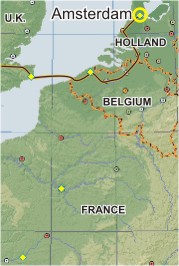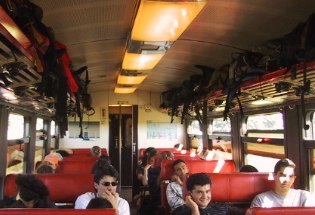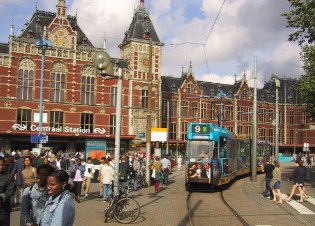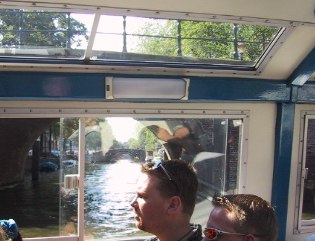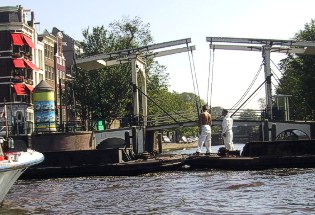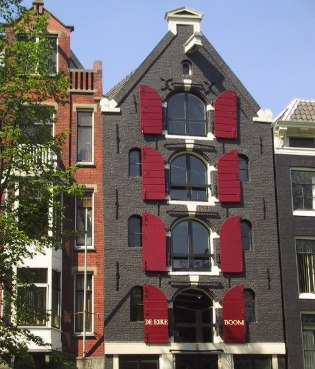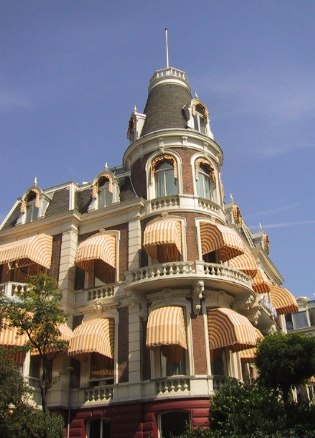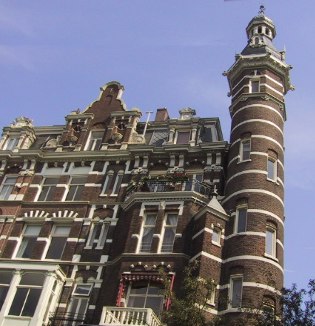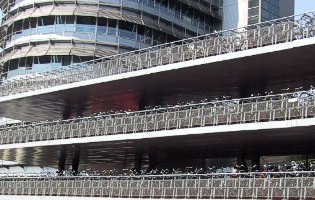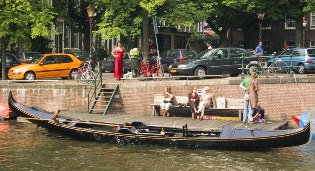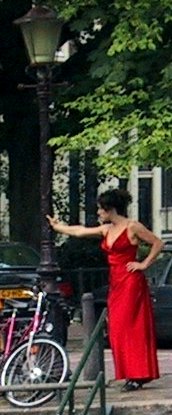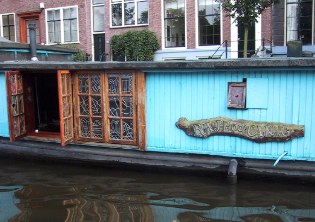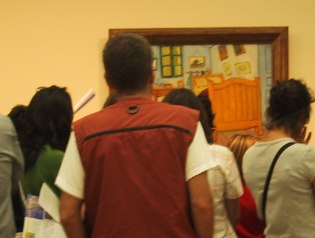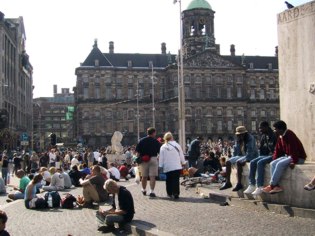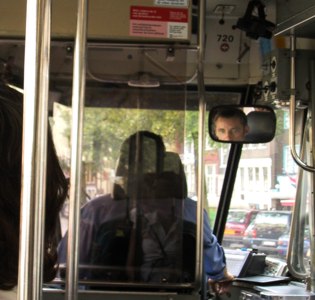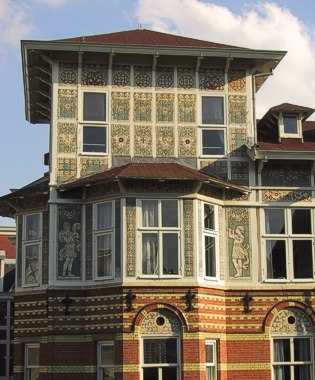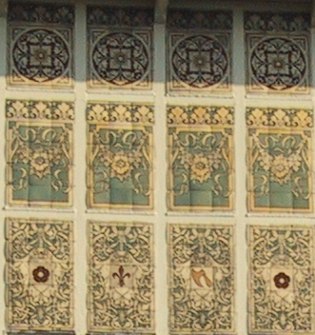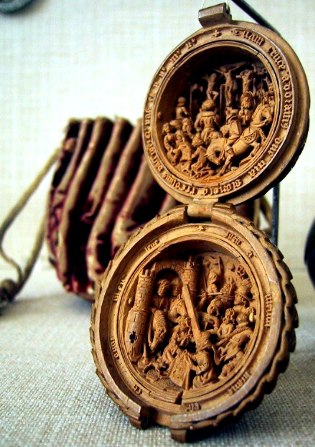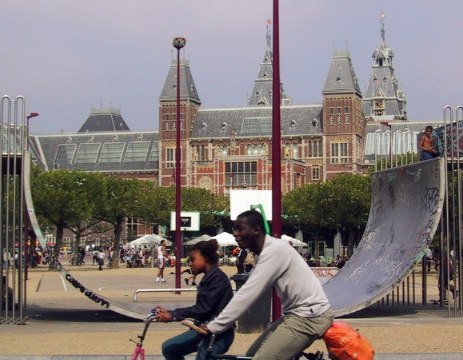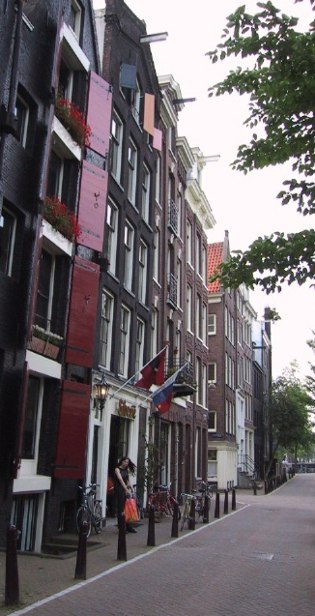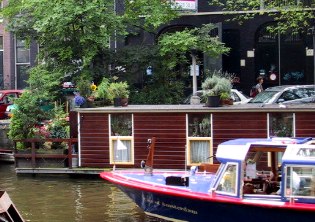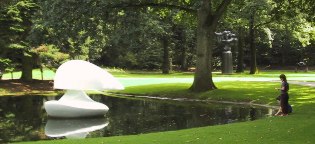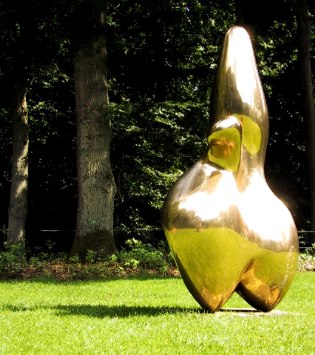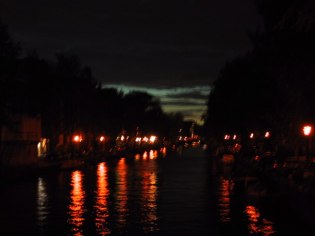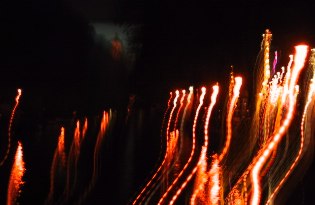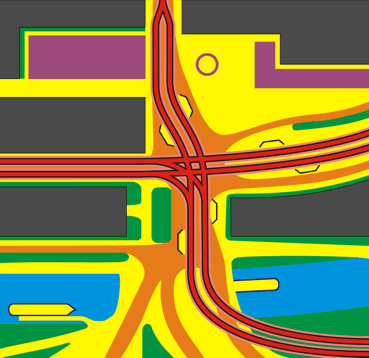 |
When we found our hotel, we were sorry. It was wholly unsuitable, a hot closet with three lumpy beds, a supposed refrigerator that fell into parts when I tried to slide it away from the wall to see how to turn it on, and a bathroom one had to back into. The website lied. If we were going to be able to develop any affection at all for Amsterdam, we would need better accommodations. At the tourist Information down town I had seen a line of perhaps a hundred people waiting to be helped to find rooms, so we knew it would be up to us. And, based on previous experience, we assumed we'd find the right place, first thing in the morning.
With a variety of bad maps and a couple of guidebooks, we ventured out to try to decode Amsterdam's concentric canals and bewilderment of transportation. At first, this seemed like a place you'd need to be born in to feel comfortable. Bicycles rule -- only baby carriages the size of small Mercedes seem to have higher priority on the street -- and woe unto you if you inadvertently step into a bike lane. Compared to London, where the traffic merely comes at you from the wrong side, this is bedlam! Lowly pedestrians are safe only on narrow islands cluttered with parked cars and crotch-high anti-parking bollards. Or in bed, if you have suitable rooms, which we didn't. Nevertheless, the heartbeat of Amsterdam was unmistakably exciting, and had all our hearts pumping and our eyes widened, and not just in terror that we'd get run over by a whizzing bicyclist.
I am happy to report that we found our way around, made a list of likely looking hotels, reassured each other that they couldn't ALL be full, had a superb Indonesian dinner, a scoop of Ben and Jerry's, and were in fair shape when we resigned ourselves to our home-for-a-night-only. |
